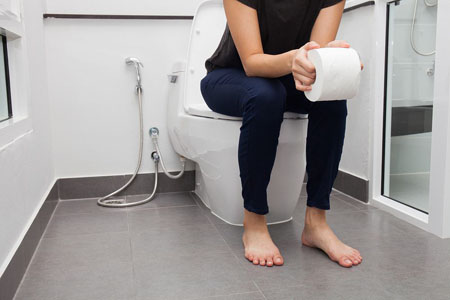Introduction
What is an anal abscess?
An anal abscess is an infected cavity filled with pus found near the anus or rectum. If the skin over the abscess breaks, pus may discharge out. Many people may confuse this with hemorrhoids (piles).
What is an anal fistula?
An anal fistula, almost always the result of a previous abscess, is a small tunnel connecting the anal gland from which the abscess arose to the skin of the buttocks outside the anus.
How a fistula is Developed ?
Anal Abcess
An abscess usually results from an acute infection of a small gland just inside the anus, when bacteria or foreign matter enters the tissue through the gland. Certain conditions, for example, inflammation of the intestine or colitis, can sometimes make these infections more likely.
Anal Fistula
After an abscess has been drained, a tunnel may persist connecting the anus or rectum to the skin. Persistent drainage of pus from the outside opening may indicate the presence of this tunnel. If the outside opening of the tunnel heals while the inside opening remains, recurrent abscess may develop.
Causes of Fistula in Ano
- An anal fistula usually develops after an anal abscess (a collection of pus) bursts
- When an abscess has not been completely treated.
- A fistula can also be caused by conditions that affect the intestines, such as Crohn's disease or ulcerative colitis.
- Tuberculosis
- As a complication of previous surgery
Types of Fistula in Ano
A simple standard classification of the types of anal fistula was described by Parks. This classification is particularly helpful in determining the type of treatment required by the patient.
There are basically 2 broad groups of anal fistula in clinical practice - simple and complex anal fistula.
The 'complexity' of the anal fistula is basically dependent on:
- The amount of anal sphincter muscle involvement
- Presence of more than one anal fistula (secondary tract and/or with abscess cavity)
- Anal fistula with tracts above the anal sphincter complex or with the internal opening in the lower rectum or with the external opening further away from the anal verge
- Anal fistula associated with other diseases (eg. Crohn's disease, tuberculosis)
'Complex' anal fistula is a more severe form of anal fistula. They will definitely require more complicated treatment. Sometimes, the treatment for these fistula is carried out in stages.
Symptoms of Fistula in Ano
Symptoms of fistulas can include.
- Pain (usually relieved after discharge of pus )
- Discharge — either bloody or purulent
- Itching
- Systemic symptoms, if abscess becomes infected like Fever, weakness etc.
Diagnosis
Diagnosis is by examination, either in an outpatient setting or under anaesthesia. The examination can be an anoscopy. Possible findings:
- The opening of the fistula onto the skin may be seen
- The area may be painful on examination
- There may be redness
- An area of induration may be felt — thickening due to chronic infection
- A discharge may be seen
- It may be possible to explore the fistula using a fistula probe (a narrow instrument) and in this way it may be possible to find both openings of the fistula
- In complicated fistula some invasive investigations may be advised like Fistulography, Endo-Anal Ultrasound, MRI- Fistulogram etc.




